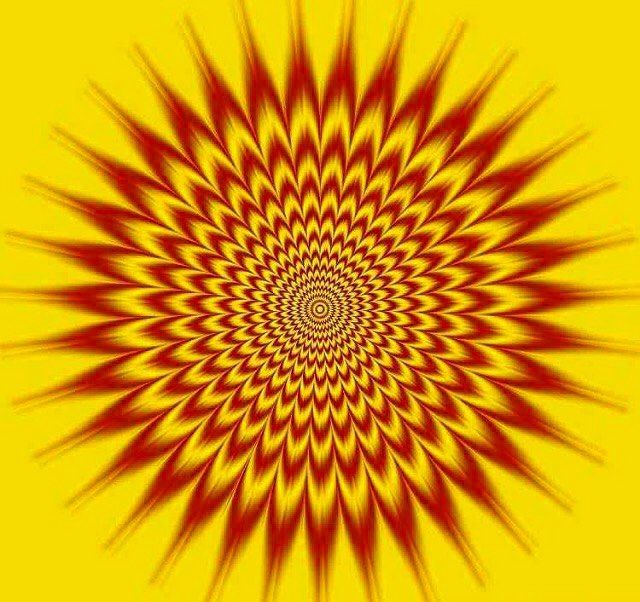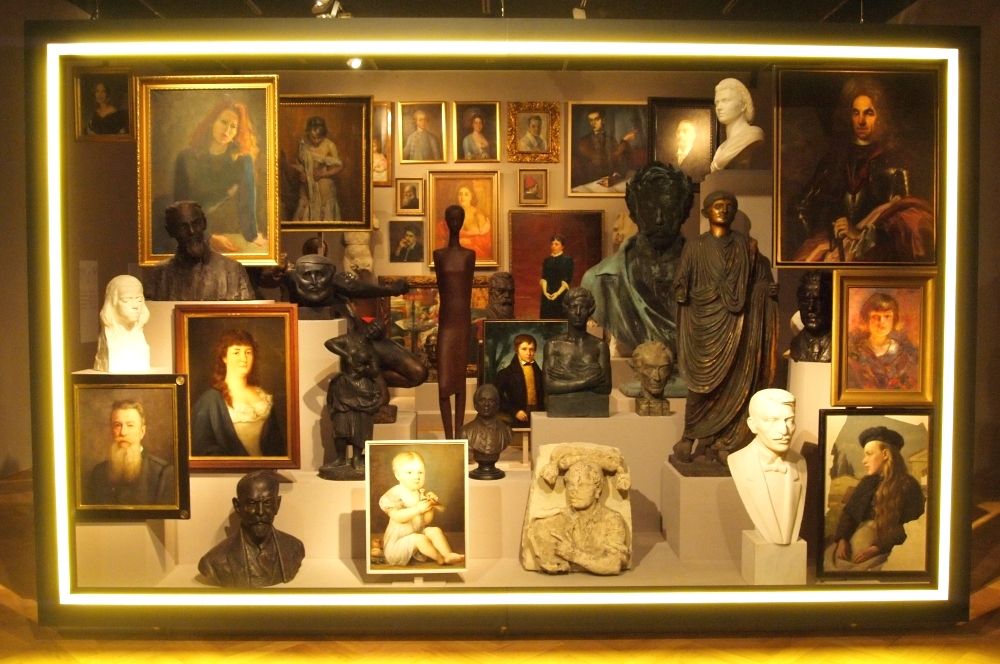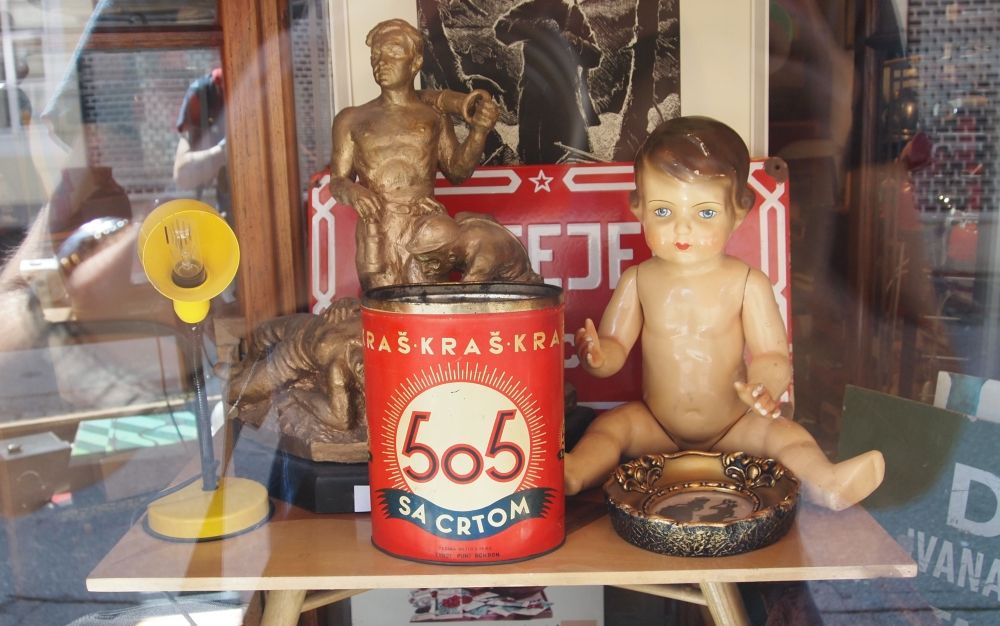News
January 6, 2019
2018 was marked with several centenaries, WWI in particular, as well as two elections and the emergence of a new political star, a comedian turned politician, Marjan Šarec, who made a name for himself as an impersonator of various politicians, including the current opposition leader Janez Janša.
PyeongChang Winter Olympics
The year began with a pre-Olympic scandal. Biathlete Jakov Fak stepped down as a candidate for flagbearer at the PyeongChang Winter Olympics, because some were bothered by his Croatian origin. Fak then won a silver in the men's 20km individual biathlon competition and became the highest ranking Slovenian competitor at the Games. A second, bronze medal was won by Žan Košir in the parallel giant slalom.
Slovenian president Borut Pahor was also in PyeongChang. He cheered for Slovenian sportsmen and then visited the demilitarised zone between the two Koreas. He describes the situation at the border in the following words: “Sorry to say, but this is bizarre.”
Slovenian armed forces
Also in February, a NATO evaluation of the 72 brigade of the Slovenian army marked it as “combat not ready” in four out of five fields of scrutiny. The Chief of General Staff of the Slovenian armed forces was thus replaced with Alan Geder, who remained in office until November, when he was replaced by the first female chief of a NATO army, Major General Alenka Ermenc.
Read more about the Slovenian military here.
Public sector on strike
The first two months of 2018 were also marked by several major strikes in the public sector, with staff demanding that the remaining austerity measures be removed.
A second wave of public sector strikes forced the Minister of Public Administration, Boris Koprivnikar, to resign. The Secretary General of the Government, Lilijana Kozćovič, then took over as the chief government negotiator.
By March 12th it seemed that negotiations were coming to an end, when just a few hours later the proposed agreement is abandoned and another strike is confirmed for March 14th. On this same day Prime Minister Miro Cerar resigns from his post, although for different reasons.
Second track of the Divača-Koper railway and resignation of PM Cerar
“Today was the last straw” said Miro Cerar, who resigned as Prime Minister after the Supreme Court declared the second track referendum invalid due to a biased government campaign.
Although the infrastructure project does not really need a new law to commence, certain other claims of the government in relation to this project raised eyebrows, including one that insists on Hungary investing €200 million in the project, a 1/5 of the cost, which would give the Hungarian party a 49% share in the project’s 2TDK company.
Campaign
With Cerar gone, Pahor decided not to look for another Prime Minister but to set an early election date instead. Regular parliamentary elections were expected for June 10, and it was initially suggested that early elections would take place in the second half of May.
NSi (the former Christian Democrats) seize the opportunity for an eventual right-leaning coalition by replacing their party leader. Ljudmila Novak is thus replaced with Matej Tonin, hoping the latter will have more success in dealing with the SDS’ leader Janez Janša.
The SDS was believed to be financing its campaign using Hungarian money obtained via their media outlets such as Nova24TV and Demokracija. Janša was on the search for campaign resources himself, borrowing €450,000 from an alleged Bosnian businesswoman Dijana Đuđić, who is unable to show where the money came from.
Why did Janša not borrow the money from a Slovenian bank? “NLB laundered a billion euros for terrorists, if this is a more credible institution, I don't know where we live”, Janša answered.
Investigations
Several parliamentary investigations came to an end in 2018. One of them was that into the bank liquidity gap under the leadership of SDS Anže Logar. The results revealed suspicious to businesses in the Balkans and Russia, where the money seems to have disappeared without a trace. The commission indicted many of the bankers in charge at the time, who were unable to remember anything during interrogations.
Because the commission didn’t investigate money laundering in detail, another investigative commission was established, headed by Janko Moderndoerfer of the SMC party, which also investigates the problematic SDS loan. The commission found out that Iranian citizen Iraj Farrokhzadeh and his business with the NLB (Nova Ljubljanska Banka) was not a case of an individual doing business in Slovenia, but rather part of an Iranian state bank scheme to break through financial sanctions with the use of the Slovenian state-owned bank. The commission issued no indictment against those responsible at NLB, as their actions were “not criminal offences”. Unlike NLB, the investigation into NKBM (Nova Komunalna Banka Maribor) revealed strong suspicions of money laundering by Italian organised crime syndicates as well as Slovenian citizens, some of them even bank employees. One person indicted was Primož Britovšek, who joined the bank on the invitation of the board president Aleš Hauc as a deputy chief for money laundering and terrorism financing prevention although he proved to have no adequate knowledge for the post.
All our stories on money laundering are here.
The investigation into the vascular stents procurements in Slovenian hospitals also came to an end with seven indictments to the relevant authorities, revealing one of the fields of systemic corruption of the Slovenian health system.
President Pahor discovers his Barbie origins
Meanwhile the Slovenian president continued to entertain the public with his Instagram posts. His first notable post of the year, in which he complains about his wrinkles is followed by another in which he discovers why he was destined to become Barbie.
Elections and the new minority coalition
Meanwhile, the election campaigns formed around the migration crisis, problems on the border with Croatia, selling NLB, public sector strikes, corrupt bankers and a disintegrating health system.
The polls showed a high possibility of an SDS victory, although in the debates nobody seemed to be willing to join a coalition with the SDS leader Janez Janša, who eventually takes 24.96% of all the votes, far ahead of the runner up Marjan Šarec’ List 12.66%. President Borut Pahor does his job and first proposes Janša as the Prime Minister and coalition leader. Janša fails to gather the support of 46 votes in the 90-seat strong parliament to make the government operationally possible and steps back into the opposition, while Marjan Šarec forms a left-leaning minority government with a support of Levica (aka the Left), who decide to remain in the opposition. The coalition agreement includes raising the minimum wage and pensions, as well as lower taxation of labour, supplemented by higher capital gains tax.
All our stories on the elections are here.
Disputes with Croatia: NLB and maritime border arbitration decision
In 2013 the then leader of the Slovenia, Alenka Bratušek, claimed to have saved the government from bankruptcy by promising to privatise NLB in return for state recapitalisation of the bank, which in the years 2011, 2012 and 2013 amounted to €2.2 billion, in addition to €2.3 billion of the bank’s bad debts that were transferred to The Banks Assets Management Company (BAMC), or the so-called “Bad Bank”.
In 2018 NLB (Nova Ljubljanska Banka, since 1994) lost two cases with regard to the Croatian savers in LB (Ljubljanska Banka, until 1994), an issue Slovenia wants to put in the context of other remaining issues that originate from the dissolution of Yugoslavia. However, the bank might now need to pay about €400 million to the Croatian savers, which is why before the elections the SDS tried to pass a constitutional law that would presumably protect the bank from having to make such payments.
A Croatian company from Umag extended its shellfish farm in the Bay of Piran, which Croatia continues to treat as part of its territory, while for Slovenia the arbitration decision on the disputed territories – which grants Slovenia most of the Bay – entered into force on January 2018. Slovenia wrote a protest letter to the European Commission, but no one seemed to take it seriously. Slovenia hence decided to file a lawsuit against Croatia for not following the arbitration agreement.
More problems in the health department
In February Aleš Šabeder took up leadership of the chaotic University Medical Centre in Ljubljana. Soon he faced mounting problems at the paediatric heart surgery department, where due to in-fighting there is a continual loss of surgeons. By the end of 2018 the health minister Milojka Kolar Celarc found an ad hoc solution by establishing a National Institute for Congenital Heart Disease, which would allow hiring foreign doctors on much higher pay than domestic ones, a move which now appears to be causing more problems than it solves.
All our stories on Slovenian healthcare are here.
September 13: New government’s constitutional session
The first surprises came with the first session of the new government. Ministers confirmed new state secretaries, among them Damir Črnčec, who became National Security Secretary in the Prime Minister’s cabinet. A former close colleague of Janez Janša, Črnčec is also known for his anti-immigration tweets, which compare refugees to cancer and call for their deportation. Šarec tries to calm the upset voices on the left by guarantees that if Črnčec continues to express such views he will have to go.
Among the tasks Damir Črnčec and Interior Minister Boštjan Poklukar face are not only the challenges of migration, but also the case of a paramilitary group, the so-called Styrian Guard, formed by self-proclaimed Duke of Styria Andrej Šiško during the summer.
Work then begins, as Šarec first travels to Brussels, then to Berlin, and then meets with the head of NATO.
Minimum wage
The Left began pushing for a two-stage rise in the minimum wage, something that was part of the coalition agreement. Accordingly, the minimum wage would be raised from the existing €638 net to €667 in 2019 and to €700 in 2020.
Business representatives were unhappy with this, as well as with the proposed rise in corporate income tax, currently at a nominal 17% one of the lowest in Europe. Ivo Boscarol, the CEO of Pipistrel, a successful light-aircraft company that in earlier years was a regular recipient of state subsidies, denounced the proposal and threatened to move his company to Italy. Pipistrel, despite the less favourable tax environment across the border, in fact built a factory in Italy in 2012 so that its aircraft could be licenced for export to the United States.
Another successful businessman, Igor Akrapovič, joined the threats to take his business out of Slovenia and the positions of both men were supported by Sonja Šmuc, the executive director of the Slovenian Chamber of Commerce.
When Levica finally prepares a bill for a rise in the minimal wage in November, Ms Šmuc explained to the national broadcaster that the raise “wouldn’t make anyone satisfied but instead make a lot of dissatisfied people: someone who now receives €700 will then be seen as if they are on a minimum wage, and therefore we are creating a country of the wealthy poor.” She later claims that her statement was taken out of a context.
Medical achievements
While the new government faced a plethora of problems with a corrupt and dysfunctional health system, this did not seem to have affected the level of medical expertise. Dedicated teams of doctors and nurses at the University Medical Centre Ljubljana successfully carry out the first transplantation of both lungs in September, effectively establishing the lung transplantation programme in the Centre.
One month later there was another breakthrough in the field of plastic reconstructive surgery. A patient who lost her entire nose to cancer was provided with a new one, constructed from the patient’s own tissue, which grew on her arm for about a month before being successfully transplanted to her face.
NLB finally sold – cheaply
On November 14 NLB shares were finally listed on the London and Ljubljana Stock Exchanges. Alenka Bratušek thus fulfilled her promise to Brussels, but was unlikely to be satisfied with the price. The State sold its 59% share for a mere €608.6 million, much less than Slovenian taxpayers had invested in it.
All our stories on privatisation in Slovenia are here.
First minister of the new government falls
The beginning of November saw a second round of election campaigns, as new mayors and city councils were to be chosen on November 18, when foreign residents also had a right to vote.
On November 13, the new Minister of Cohesion and former mayor of Komen Marko Bandelli was forced to step down after sending an inappropriate message to the new mayoral candidate:: “I’ve been informed that you are running for mayor’s office. (…) If your campaign is all about fighting the neighbours, then you should know that no support will come from me. And you know yourself the importance of un-support from the two important departments such as cohesion, EU regional development funds and above all infrastructure.”
It is not the first time Bandelli doesn’t seem to understand the gravity of the matter. He had previously used the emergency blue lights on his official vehicle for no reason other than he was late, telling the media that he had the right to do so. This time he admitted his mistake, adding that he could redeem himself by doing a good job. Prime Minister Šarec had other reasons for wanting him gone, however, as Bandelli also failed to prepare a presentation for the Finance Minister on the situation with regard to drawing on EU funds. When the 5th of November deadline for this task had passed, Bandelli then asked to be given more time.
Pensions
The party leader Alenka Bratušek was surprisingly protective of Bandelli, although he still lost his job. She stated that she expects equal treatment by Prime Minister Šarec for all government officials, and at the same time seized the “opportunity” to strike back. She reminded Šarec to respect the coalition agreement and government commitment to raise pensions, or else...
Marjan Šarec’ comment on the demand by SAB (Stranka Alenke Bratušek) is that “to claim that only one coalition party cares for the pensioners is quite pretentious.” Was he worried that SAB was about to leave the governing coalition? “They didn’t show much of intention to leave.”
SAB stops pushing on this issue and proposes Iztok Purič as the new cohesion minister.
All our stories about pensions in Slovenia are here.
SDS against the Global Compact for Migration
In the second half of November the SDS began its campaign against the UN pact on migration that would be signed at the UN conference on December 10-11 in Marrakech. The SDS claims that the agreement does not differentiate between legal and illegal migrations and demands an advisory referendum on whether or not Slovenia should join the agreement.
The temperature went up at an irregular parliamentary session on the matter, where we could hear everything from curses to orders to take a member out of the parliament.
All our stories on migration in Slovenia are here.
Local elections 2018
At the local elections on November 18, citizens elected new mayors and local councillors. Ljubljana re-elected Zoran Jankovič, while another well-known mayor, Franc Kangler, lost his seat in Maribor to a challenger, Aleksander Saša Arsenovič.
In Koper the incumbent Boris Popovič lost to Aleš Bržan, with a mere seven vote difference. Popovič filed a series of complaints and when a mistake was discovered at one of the polling stations the difference went from seven to seventeen and Bržan became the new Mayor of Koper.
The end of strikes
At the beginning of December and after two months of negotiating the government and unions sign an agreement which will raise almost all salaries in the public sector.
Impeachment proposal against Prime Minister Šarec
On December 21 Janša's SDS and Jelinčič' SNS filed an impeachment proposal against Prime Minister Šarec due to his government's failure to secure full financing of private schools. The impeachment was not supported by the opposition NSi, and Šarec responded that while this particular attempt to remove him from office was not to be taken very seriously, it should serve as a reminder that there is an opposition in Slovenia and that it’s not going to sit around idly.
In 2018 Marjan Šarec also became a regular character impersonated on the Radio Ga-Ga show, where he began his career as one of the show’s performers.
The lights should be down by the end of the week, and as we work to get over the Christmas/New Year backlog there’s less time than we’d like to go out and have fun. But that doesn’t mean we haven’t looked ahead with some pleasure at the things we’ll be missing, able to skim the cultural life of the city with coffee or two from the warmth of a sofa, a pleasure we now hand on to you in the form of this multimedia guide to what’s on in Ljubljana next week (with past editions here).
As ever, clicking on the venue names in the list below should get you more details with regard to the time, price and location, as well as other events on at this place in whatever week you're here. Finally, if there's something you want to promote in a future edition of What's on in Ljubljana please get in touch with me at flanner(at)total-slovenia-news.com
Getting around Ljubljana
If you want to get a Ljubljana Tourist Card, which gives you travel on the city buses and entry to a lot of attractions, then you can read more about that here, and if you want to use the bike share system, as useful for visitors as it is for residents, then you can learn more by clicking this. Visitors with reduced mobility will be pleased to find that downtown Ljubljana is generally rated as good with regard to accessibility, and that there’s a free, city-sponsored app called Ljubljana by Wheelchair highlighting cafés, attractions and so on with ramps, disabled bathrooms and Eurokey facilities, which you can read about and download here. If you’re driving into town and don’t know where to part, our guide to how to park in Ljubljana is here.
Want / need cigarettes but the stores have closed? Here's an incomplete list of bars downtown that will satisfy your craving for the demon weed. While if you’re having trouble with the ATMs then here’s a guide to the Slovene you’ll see on screen. If you get a hangover then find out where to get paracetamol (and prescription drugs) in Ljubljana here, while details on emergency birth control can be found here.
Ljubljana is a small and relatively safe city, but if need to contact the police then there’s a special number for foreigners, and that’s 113.
Cinemas and films playing in Ljubljana this week
You can read about all the cinemas in town here, while a selection of what’s playing this week is below, and note that kid’s movies tend to be shown in dubbed versions, so do check before driving out to a multiplex and dropping off the young ones if they can't understand Slovene. That said, parents should pay attention to Kinobalon, which is Kinodvor's regular weekend series of film screenings and events for children, from babies on up, with special parent/child events, "first time in a cinema" screenings, and babysitting. Learn more about it here, and see the current schedule here.
Cankerjev dom – The Dutch movie Girl is playing here this week.
Kinodvor – The arts cinema not far from the train station is showing, among other features, The Old Man & The Gun, Den tid på året, Maria by Callas, Todos lo saben, Lady Bird (special rendez-vous with coffee and talk screenings) and The House That Jack Built.
Kinoteka – This revival cinema isn’t far from Kinodvor, at the train station end of Miklošičeva, is showing The Wrestler (Aronofsky), Last Tango in Paris (Bertolucci) as well as some Slovene and Yugoslav classics.
Kolosej - The multiplex out at BTC City Mall is playing all the big movies, which this week include The Grinch (with both subbed and dubbed versions), Fantastic Beasts: The Crimes of Grindelwald, Bohemian Rhapsody, Robin Hood, Johnny English 3, A Star is Born, Gajin svet, dubbed and subbed versions of Spider Man: Into the Spider-Verse, Aquaman, Bumblebee, a dubbed version of Asterix: Le secret de la potion magique, Second Act, Mortal Engines, Južni veter, and Mary Poppins Returns. The new releases this week are a dubbed version of Ralph Breaks the Internet: Wreck-It Ralph 2, and The Old Man & the Gun.
Komuna – The cinema in a basement behind Nama department store is showing Bohemian Rhapsody, a dubbed version of The Grinch, The Old Man & the Gun, and A Star is Born.
Clubbing in Ljubljana
Compared to some European capitals it can seem that nightlife in Ljubljana ends rather early, especially along the river, but there are still bars that stay open late and clubs were you can dance until dawn, and perhaps the best place to stumble across something interesting is the legendary Metelkova. Be aware it's a grungy kind of place and not for all tastes, but also that there's consideable variety to found within the various clubs there, from death metal to electropop, gay caberet to art noise. You can read "the rules" of the place here.
Božidar - Friday, January 11, you can dance from 23:59 to 05:00 with the fantastically named Joy Orbison b2b Jon K - All night longgg!
Channel Zero – Friday, 23:00 to 06:00, there’s an event called Traxman (Tekk Dj'z), with support from DJs SunnySun, Terranigma and Bakto. It’s being promoted with the following mix.
Gala Hala – Friday night there’s Wave Riders! with DJs Torulsson and Kobayashii and VJ Maii. Saturday the fun continues in this Metelkova venue, with a free event called Swaguljčica and hip hop from DJs Lil Ris, Tschimy, Borka and Cookie.
Klub Cirkus – Dress with care on Friday and brush off any dust or dandruff as it’s time for BLACK MOON – UV Gathering #5, a UV black light party soundtracked with dance, future house, edm, house, r&b, hip hop, and trap, as provided by LVN x Tim Black. Saturday is then a party night called Veliki Collegium After Party, with no details available as to the music.
Klub K4 – Friday night the klub 4 kool kids that’s into its 4th decade has K4 Gibanica, with “dance” being played by Nitz & LARA H, Tzena, Perodinamika, and Yurii, with VJ 5237 giving something for you to look at. Saturday there’s more dance in the form of Temnica, with music from СИНИ, Tritch, and S.S.S.
Orto Bar – Saturday, 22:00 to 04:00 there’s a night dedicated to Elvis Presley’s birthday. At present all that we can tell you is the music will be provided by DJ Martin13. Starting just before this, at 21:00, Yu Generacija are hosting, and playing, a selection of Yugo rock.
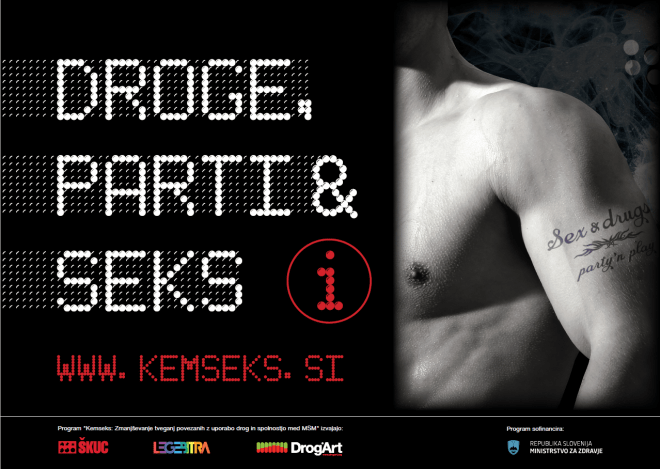
Poster: drogart.org
Harm reduction and drug testing
Drogart is an organization that aims to minimise harm on the party scene, and offers drug-testing services and reports on their webpage. It’s in Slovene, but you can Google translate it or work things out yourself, and our story on the group is here. One thing they recently warned of were pink Pharaoh pills with around twice the normal MDMA content (measured at 261 mg). See pictures and learn more here, but do remember that all the usual drugs remain illegal in Slovenia, while our in-depth profile of the group is here. We've also heard reports - albeit anecdotal - of women's drinks being spiked in the city, so take care and let friends know where you're going and, as ever, avoid unknown powders of questionable content and dose.
Some fun facts about the city and its castle...
Enhance your stay in the city and impress or annoy your friends and companions by learning some obscure facts about the city here, and the castle here.
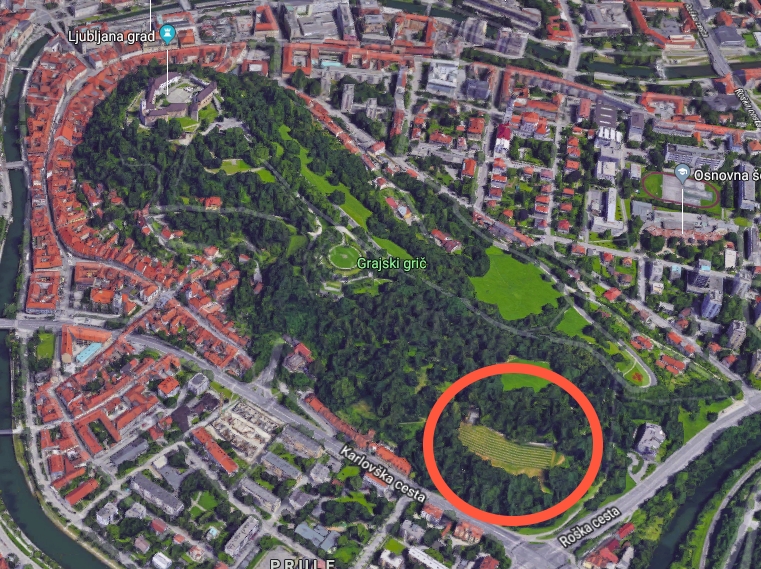
The Castle has its own vineyard at the other end of the hill, as well as a cutting from Maribor's "World's Oldest Vine" growing in the courtyard. Screenshot: Google Maps
Photo: JL Flanner
Things to do with children in Ljubljana
You can find our Top 12 list of things to do with kids in Ljubljana here. If want to read more about the philosophy behind the wonderful House of Experiments look here, while our trip to the Museum of Illusions is documented here, and there’s always riverside walks, ice cream and pizza.
Open-air ice skating can be found in Tivoli Park until March 10, 2019, with the details here.
Mini Teater Ljubljana – There's always an interesting and varied range of shows on for both adults and families at this theatre not far from Križanke. The English schedule for the month is here.
Ljubljana Puppet Theatre - The puppet theatre near the Central Market and next to the Castle funicular has a full programme or shows, for children and adults, with the schedule here.
Live music in Ljubljana
Cankerjev dom – Thursday, 19:30, Rinnat Moriah, soprano, and Jean-Frédéric Neuburger, piano, will perform under the baton of German pianist and conductor Michael Wendeberg, featuring Richard Strauss, A Hero's Life.
Klub Gromka – You can enjoy some European free jazz in Metelkova from 19:00 to 02:00 on Thursday, with performances from Frame Trio, Olfamoštvo, and Abstract Truth. Then Friday the 11th there’s live grindcore with Ritval VI - Glista, Trobec, and Alberto Tomba.
Ljubljana Castle – Friday night is jazz night at the Castle, and this Friday, 21:00, you can enjoy the live sounds of Papir, as seen below.
Pinelina dnevna soba – Friday evening, 20:00 to 23:00, you can enjoy live music from Mónika Lakatos, being promoted as follows: “Passionate, tragic, painful, life-affirming music of Hungarian Roma singer Mónika Lakatos accompanied by a guitarist Mihály “Mazsi” Rostás in intimate atmosphere of the Pinelina dnevna soba.”
LGBT+ Ljubljana
If you want to learn more about Ljubljana Pride, then take a look at our interview with its president here. If you're looking for more general links on "gay Slovenia", including a history of the scene and various projects, then you can find that here, while our stories about the community can be found here.
Klub Monokel – This lesbian bar in Metelkova is open every Friday. Nthing else is planned for this week, but take a look below.
Klub Tiffany – Te gay bar next door is also open on Fridays, while every Monday until June 2019 there's tango at 18:00. This Saturday it also has LFU - Večer feministične, lezbične in kvir pornografije, “LFU invites you to a film projection and talk about feminist, lesbian, and porn pornography from contemporary Berlin production. The event is open to lesbians, women and trans persons.” More details here.
Pritličje – This seems to be the only "always open" LGBT-friendly cafe / bar / events space in town, and perhaps the country, so it's a good thing it's such a good one, open from morning to night, and with fliers and posters letting you know what's happening outside the narrow confines of, say, a general interest online what's on... guide.
Museums and galleries in Ljubljana
Most public galleries and museums are closed on Mondays, although not the National Museum.
Plečnik's desk. Photo: JL Flanner
Plečnik’s House is worth a visit if you want to learn more about the architect who gave Ljubljana much of its character. Read about our guided tour here. Something on for a limited time is Plečnik and the Sacred, showing here until January 20, 2019.
Cankerjev dom – Running until the end of February 2019 is an exhibition titled Ivan Cankar and Europe: Between Shakespeare and Kafka. This is “An examination of Cankar’s art through an analysis of influences and interpretations, and juxtaposition with contemporary European writers. The visually elaborate architectural and graphic layout, supported by audio-visual media, installation art and diverse visual highlights, offers a vivid account of Cankar’s excellence, his comprehensively exquisite aesthetic and artistic vision.”
City Art Gallery – Drago Tršar recently had a show at the main Moderna looking at his monumental works, and now this smaller gallery in the Old Town, not far from Town Hall, is showing some the sculpture’s erotic works, on until January 20, 2019. It’s being promoted with the following example, and is quite explicit in terms of breasts and vaginas, but if that's OK for you and your companions then there's much to enjoy in the paintings, bronzes and ceramics on show. You can read about my visit, and see a lot more pictures, here.
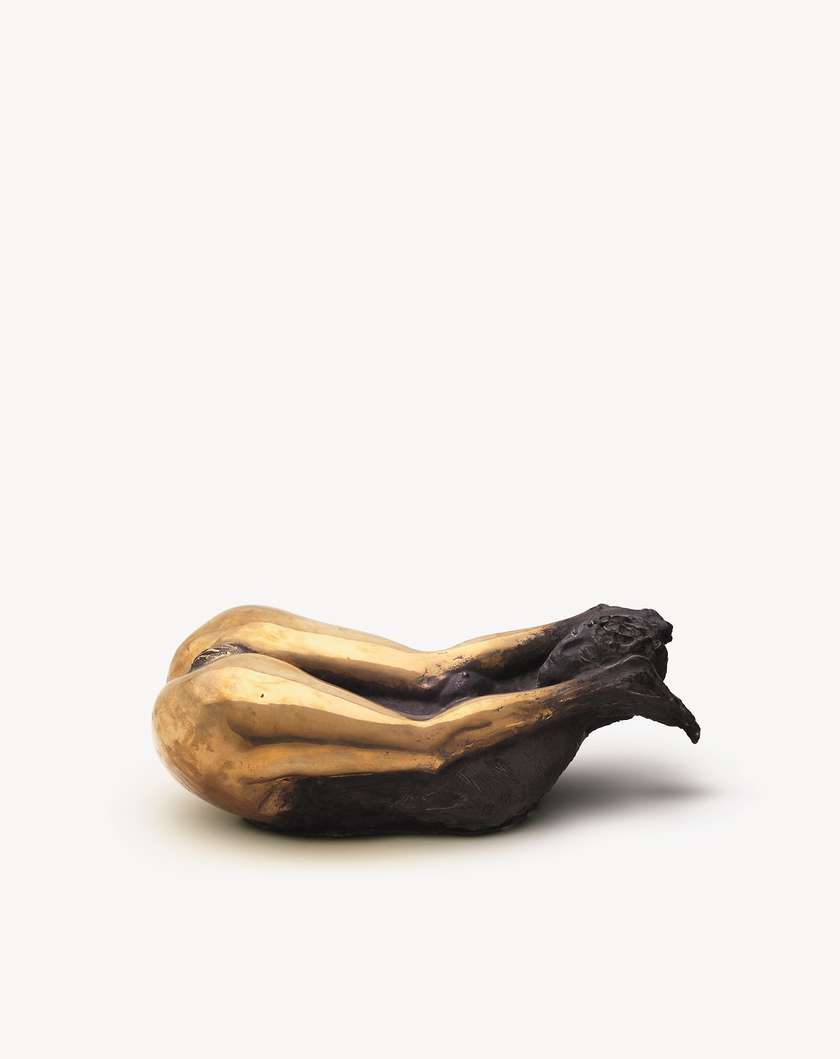
City Museum – The Museum in French Revolution Square has an exhibition on the writer Ivan Cankar that’s on until the end of February 2019, with pictures, books and manuscripts, all presented in Slovene and English. It also has a very interesting permanent exhibition on the history of Ljubljana, from prehistoric times to the present day, with many artefacts, models and so on that bring the story alive.You can read about my visit here. Until March 2019 there's a show highlighting the work Elza Kastl Obereigner (1884-1973), a pioneer Slovenian sculptress, with an example of her work shown below.
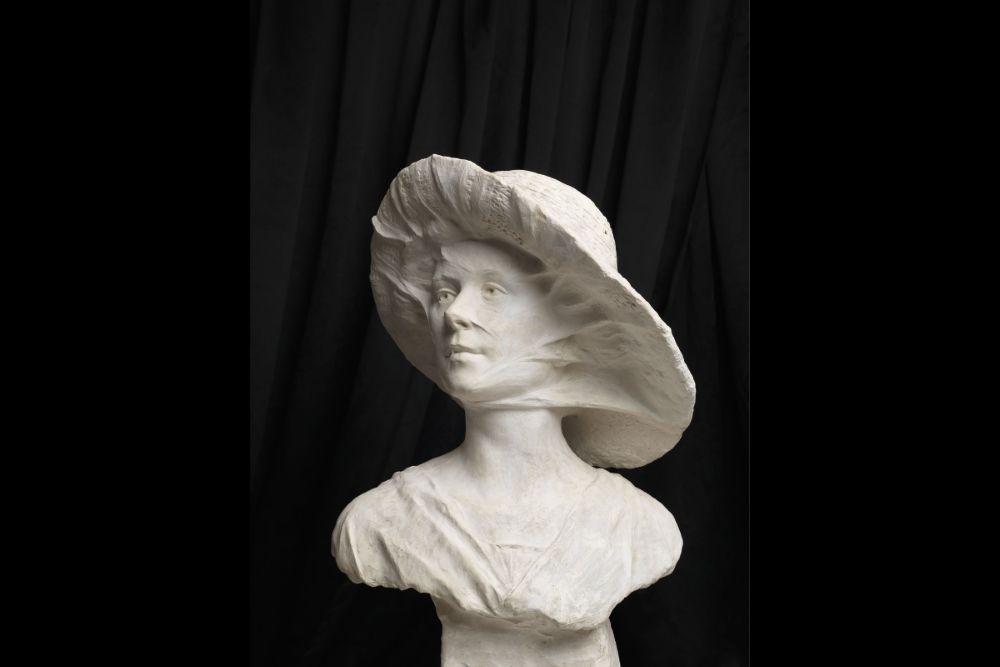
Photo: M Paternoster
The Faces of Ljubljana in the City Museum. Photo: JL Flanner
Galerija Jakopič – On until March 3 is Over My Eyes (Na moje oči), an exhibition of photographs from Iraq taken by Iraqi photographers.
Kino ŠiškaKino Šiška – A show on Contemporary Graphic Arts, with the focus on printing, is running here until January 21, as well as various other exhibitions.
International Centre of Graphic Arts – Running from Friday until March 3 2019 there will be a show of posters from Milton Glaser, while until March 3 2019 you can enjoy paintings, drawings, prints and murals from Nathalie Du Pasquier in a show called Fair Game. The latter is being promoted with the following image.
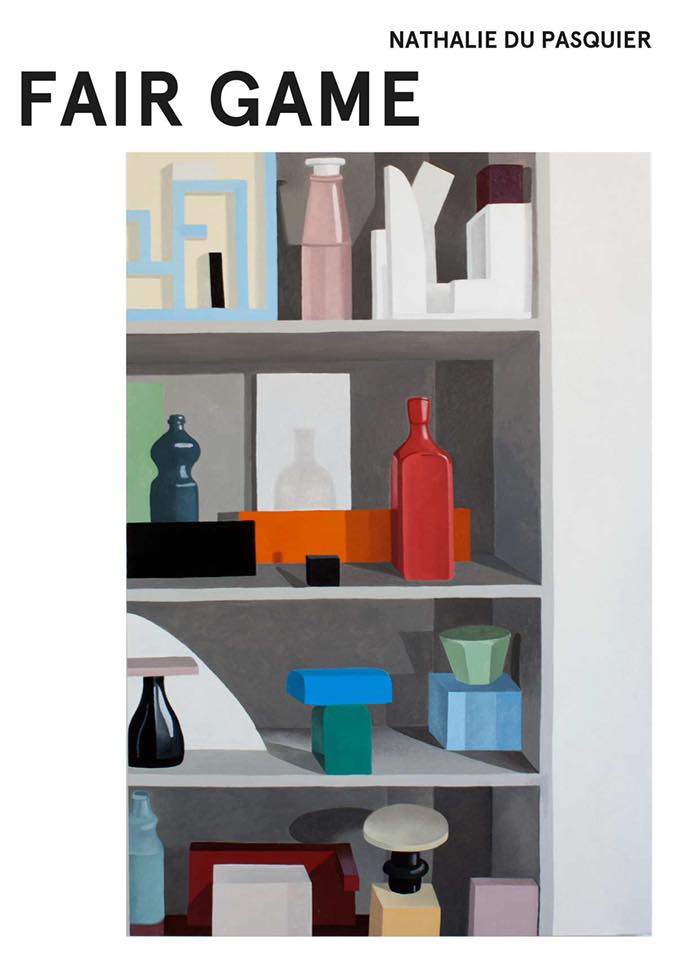
Ljubljana Exhibition & Convention Centre – Just outside the centre of town, at Dunajska cesta 18, you can see a lot of plasticized bodies at the Body Worlds Vital show, running from October 20 until January 20 2019.
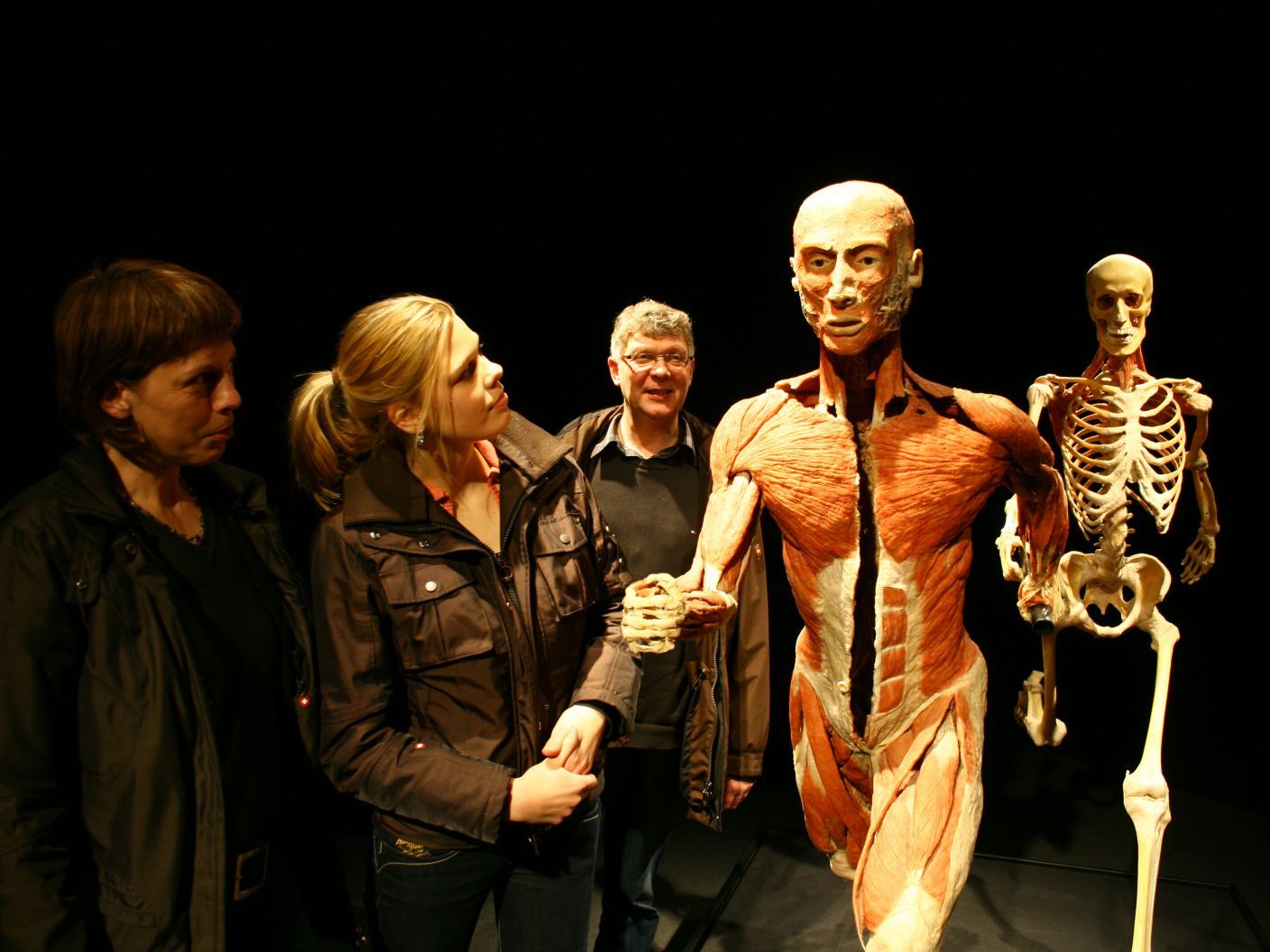
Photo: Body Works Vital
MAO – The Museum of Architecture and Design has much of what you'd expect, and until March 25, 2019, has a show on Ljubljana and it's relation with water. Until February 24 visitors can enjoy Toasted Furniture, which presents some experiments with the reuse of plastic waste, and until February 28 there's a show on Oskar Kogoj and his chairs.
Sam, 1966, fotografija na srebroželatinskem papirju. ©Stojan Kerbler
Moderna galerija – The main branch of this gallery, to be found near the entrance to Tivoli Park, has a good collection of modern art, as well a nice café in the basement, and it's latest exhibition focuses on the photographer Stojan Kerbler, which runs until January 13, 2019, and shows rural live in Slovenia for the recent past.
Museum of Contemporary History – The museum in Tivoli Park is showing, among other things, (R)evolution of the museum 1948-2018. 70 years of the Museum of Recent History of Slovenia.
National Gallery – The country’s main gallery has “the best” of what’s on offer from the Middle Ages to non-contemporary modern visual arts, and is in a great location for exploring other areas, just by Tivoli Park and opposite the main branch of the Moderna galerija. Running until February 10 2019 is a show called Ivana Kobilca (1861-1926): But Of Course, Painting Is Something Beautiful!, featuring works like the one below. You can read about our visit to the room containing sacred art from the Middle Ages here, and see a picture from our trip after the two girls.
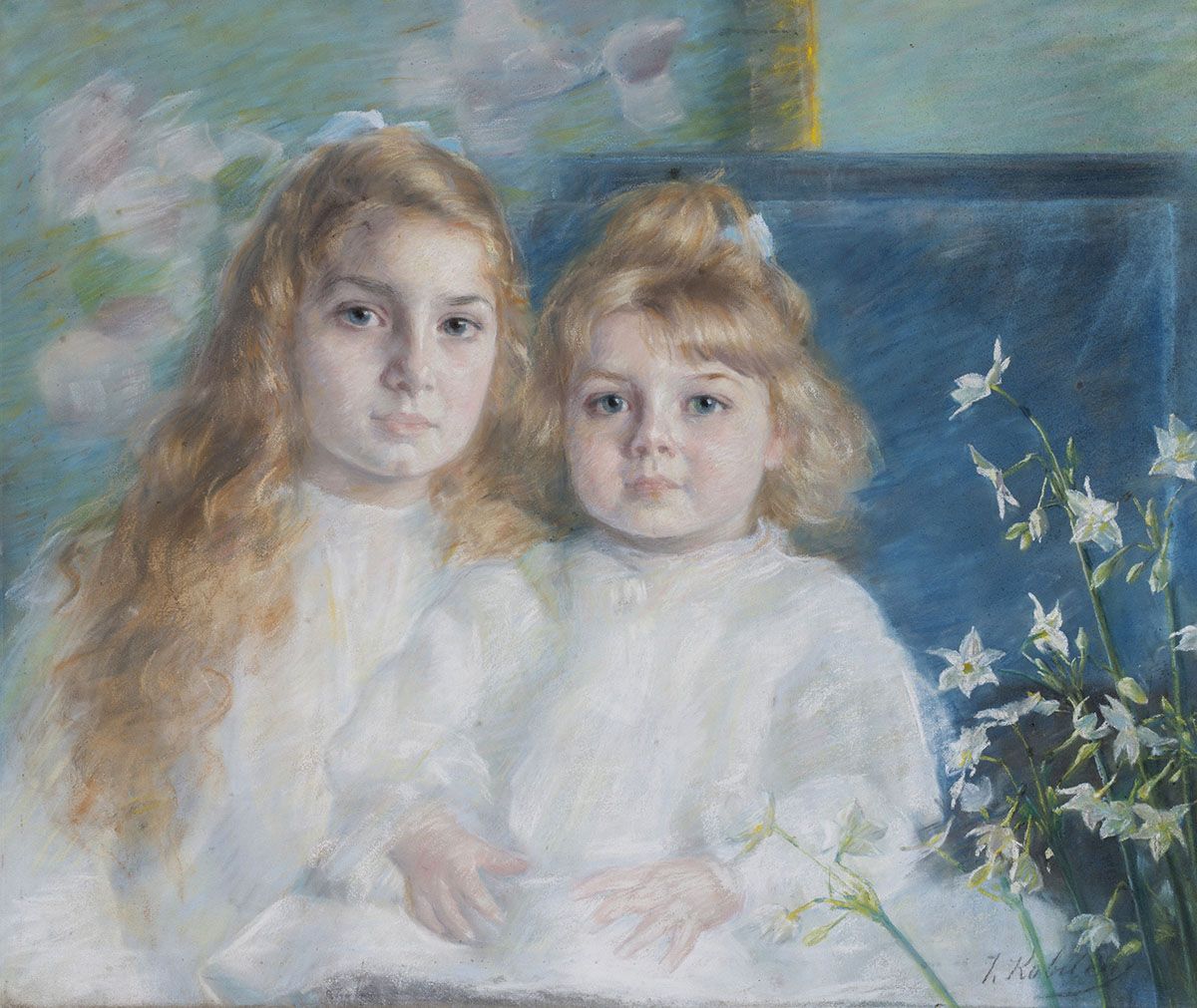
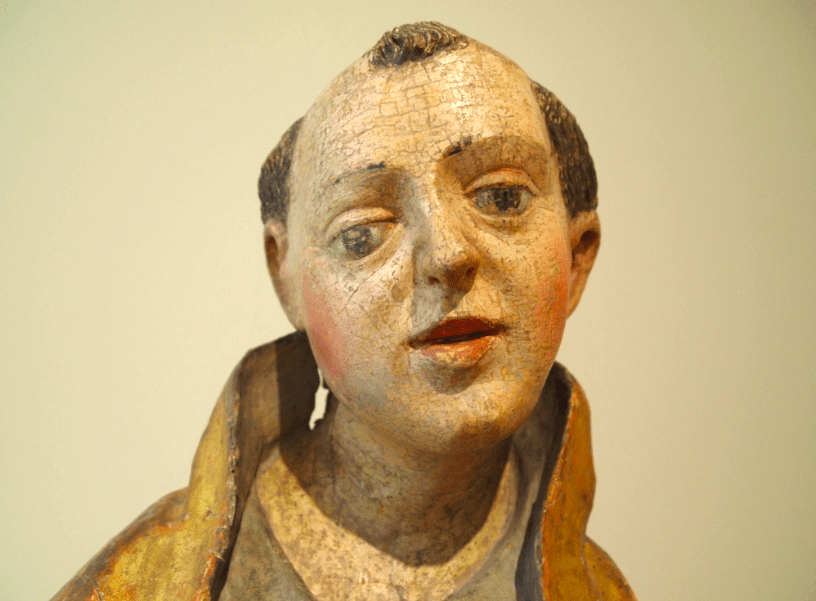
JL Flanner
National Museum of Slovenia – There’s plenty to see in the permanent collection here, from Roman times, Egypt and more, with the big draw this season being the exhibition of over 140 items of gold from Ming Dyntasy China, as reported here, and with an example below. This runs until February 15th.
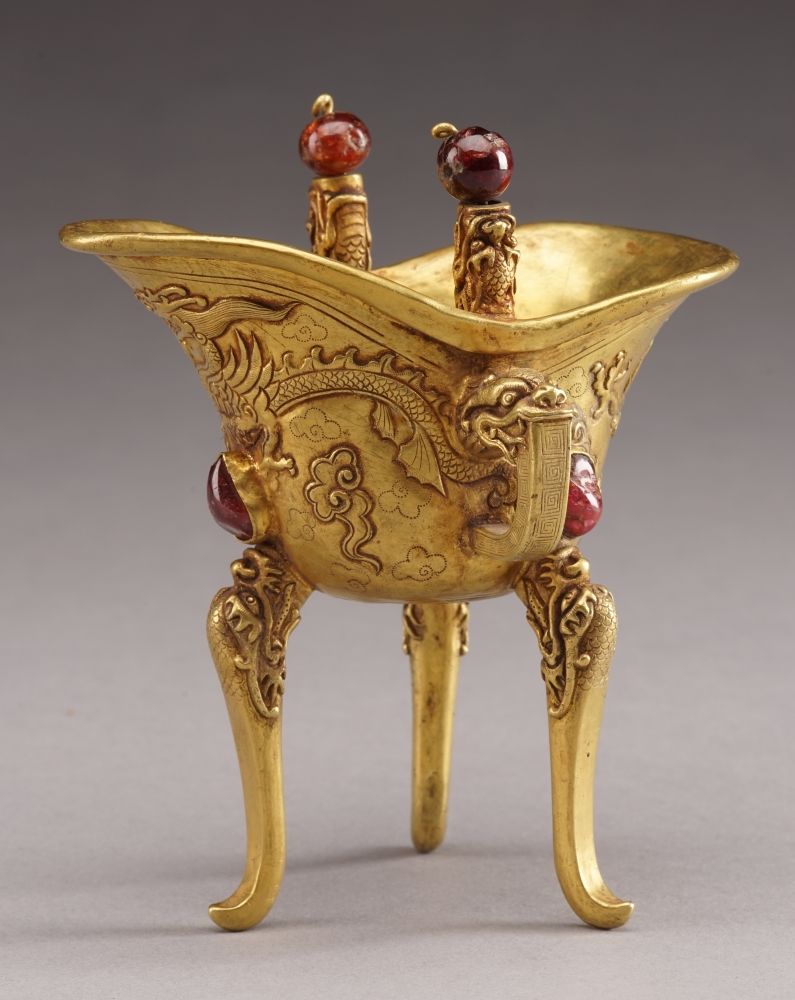
Photo: Wang Wei Chang
Meanwhile, the museum's Metelkova branch, located between one branch of the Moderna galerija and the Ethnographic Museum has some rooms on Church art, furniture and weapons, with the latter including more guns than you'll see anywhere else in town, and quite a thrill if coming from a nation where such objects are not household items.
Natural History Museum – On until the end of June 2019 is Our Little Big Sea, which takes a look at the oceans.
Škuc Gallery - You can find this in the old town, and until January 20 there;s an interesting and often moving show called Kids that you can see for just 1 euro, with works by Johanna Billing, Matic Brumen, Andreja Džakušič, Priscila Fernandes, Eden Mitsenmacher, Franc Purg, and Pilvi Takala.
Slovene Ethnographic Museum – The museum currently has a temporary show on Bees and Beekeeping, on until June 16 2019, as well two permanent exhibitions. One of these is called Between Nature and Culture, and has a great collection of objects from Slovenia and around the world, well worth the trip up to the third floor to see it (as recounted here). This place is located near the newer branch of the Moderna galerija and Metelkova.
Union is "the Ljubljana beer", but now both it and Laško are owned by Heineken. There are many local brews on offer around town, though, if you want to explore IPAs, stouts, wheatbeers, sours and so on Photo: JL Flanner
Union Experience – The Ljubljana-based brewer has a museum showing the history of the company, with the ticket also including access to part of the factory and a few samples of the product. You can read about our visit here.
It's not a formal museum, but if you're interested in "Yugo-stalgia" then you'll enjoy a trip to Verba, a small, privately run space that's crammed with objects and pop culture items from the era, and is conveniently located at the start of one of the short walks to the castle. It's also a great place to take pictures, if you leave a donation, and you can read more about it here.
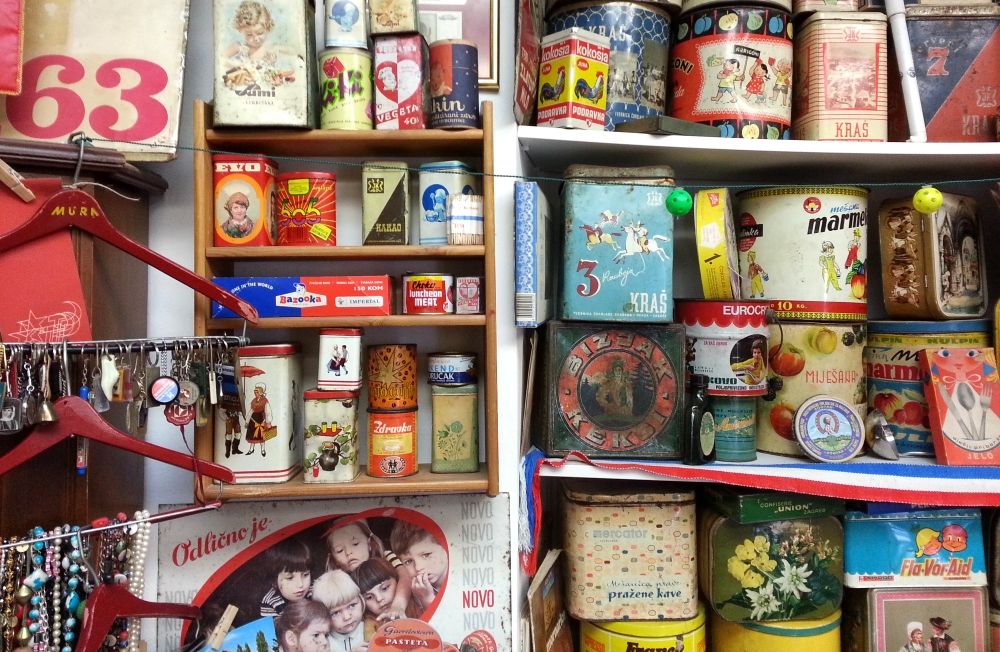
Verba. Photo: JL Flanner
Alternative Ljubljana isn't a museum or gallery, as such, but instead turns the city streets into a museum and gallery. Learn more about their tours of street art, history and LGBT Ljubljana here.

Photo: JL Flanner
Opera, theatre and dance in Ljubljana
Cankerjev dom – Thursday, 19:30, Rinnat Moriah, soprano, and Jean-Frédéric Neuburger, piano, will perform under the baton of German pianist and conductor Michael Wendeberg, featuring Richard Strauss, A Hero's Life.
Gledališče IGLU - IGLU Theatre – Saturday night this group is usually putting on an English improv show somewhere in town, but it’s generally promoted after this is written, so check the Facebook before putting on your shoes.
SNG Opera and Ballet – There’s nothing on here this week.
Slovenska filharmonija – This orchestra is playing at Cankerjev dom, see above.
Other things to do in Ljubljana...
If you'd like to spend an evening painting with others, then take a look at Design with Wine, which organises painting parties on Trubarjeva cesta,
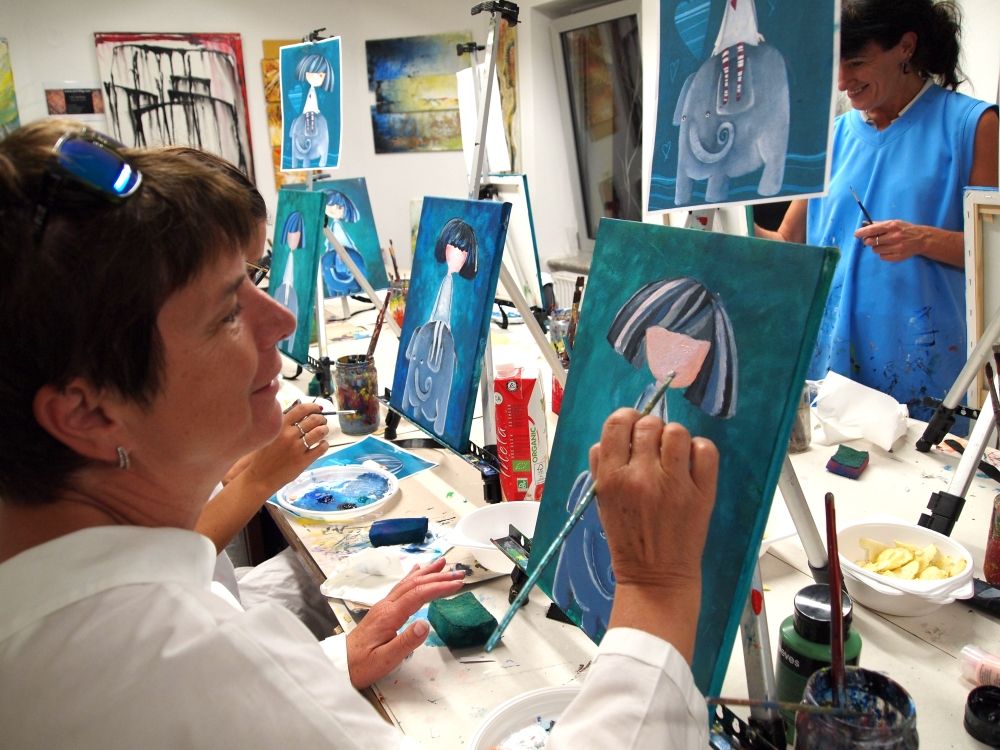
If you want to see some antiques, then check out the wonderful Antika Carniola, as discussed here. The man behind it, Jaka Prijatelj, has a fine eye for life on this street, as you can see on his Facebook account.
Photo: JL Flanner
If you’re in town and want to go jogging or walking in nature, why not take another look at the Castle, with a brief guide to the trails here. If you want something bigger, head to Tivoli Park.
And if you're bored with the Old Town, why not take a walk, cycle or boat ride to nearby Špica and enjoy the riverside life. Learn more about that here.
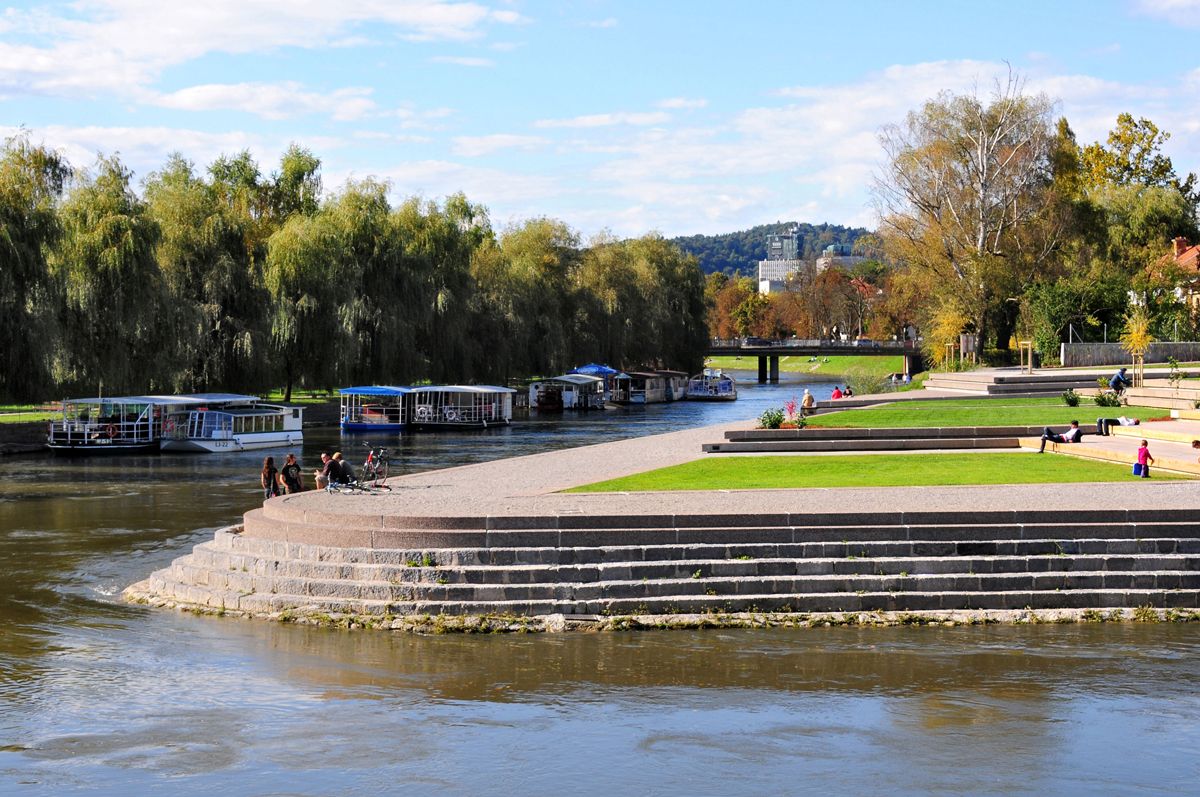
visitljubjana.si
![]()
maxpixel.net, public domain
Want to stretch and breath? Then check out our list of drop-in yoga classes for tourists, visitors and the uncommitted. If you're heading to the coast, check out our interview with a yoga teacher who offers breakfast sessions there, while if you're staying in town (or nearby) and want to try some "family yoga" then you can learn more about that here and maybe get your kids to calm down a moment or two.
There are some golf courses near Ljubljana, but even ones further away are not far, as seen in our list of all the golf courses in Slovenia. Note that these close when the snow starts, if it ever does this year, in which case you might be interested in what's new at Slovenia's ski resorts for 2019, as reported here.
![]()
Photo: maxpixel.net, public domain
Daytrips from Ljubljana
Most of Slovenia is only a few hours from Ljubljana, and you can easily visit Lake Bled, Lipica Stud Farm, Postojna Cave, Predjama Castle, the coast and other locations, while if you'd like to take a photo of from that bench in Bled, then you can learn how to get there here. If you’re looking for something more ambitious, then check out our recent guide to the 17 members of the Association of Historical Towns of Slovenia
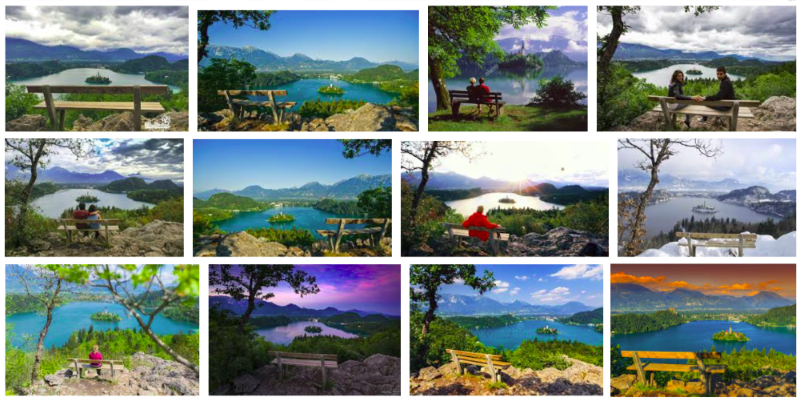
Photo: Google Image Search

Zvezda. Photo: JL Flanner
Finally...eating ice cream in Ljubljana in winter
Only serious ice cream stores keep making and selling ice cream through the winter, so we took a look at six of the best in the pedestrianised area, with something for sophisticated tastes as well as those who like to pile on the candies, cookies, syrups and treats. Read all about it here.
STA, 4 January 2019 - A total of 19,123 births were given in Slovenian maternity wards in 2018, down from 19,706 in 2017, which is a 3% drop, according to unofficial figures released by the National Institute of Public Health (NIJZ). This means that the trend of falling recorded since 2011 continues.
The final number of children born in 2018 is not available yet, but given that an average 3% of newborns come from multiple pregnancies, the NIJZ believes almost 19,500 babies were born in Slovenia last year.
Since the NIJZ started gathering birth statistics in 1988, 2003 was the year when the fewest children were born in Slovenia - only 16,917.
Related: Slovenia’s aging population, in graphic form
The number of newborns was then increasing until 2010, when 22,002 babies were born, but the trend reversed in 2011, with the number of newborns dropping to 21,567.
However, the NIJZ says on its website that last year's drop was much bigger than those in the 2011-2017 period.
Meanwhile, the largest number of babies in the country with a two-million population in the past 30 years - as many as 26,442 - was born 1988.
STA, 4 January 2019 - Joc Pečečnik, the driving force behind the project to revamp a rundown Ljubljana sports stadium designed by Slovenia's best known architect Jože Plečnik, has not given up on the project just yet. After withdrawing a request for an environmental consent, he has filed for an integral construction permit, which is to speed up the project.
Although opponents of the project declared it dead and buried yesterday when it transpired that the investor, Pečečnik's Bežigrad Sports Park (BŠP), had withdrawn the request for the environmental consent, it seems that Pečečnik has only taken a new path to implement his plan.
Rather than pushing for the environmental consent as a precondition for a building permit, he has decided to request the integral construction permit under new legislation.
The Ministry of Environment and Spatial Planning confirmed for the STA that the BŠP had filed the request on 20 December in line with the amended construction legislation that stepped into force last year.
The procedure for integral construction permit combines the procedures of the environmental impact assessment and the issuing of the construction permit. The new legislation gives the ministry full power to decide on projects, completely leaving out the Environment Agency.
The procedure must also not take more than five months, not counting the period of public debate.
Neither Pečečnik nor the Slovenian Olympic Committee, which is involved in the project along with the Ljubljana municipality, would comment on the issue today.
The news first broke as the civil initiative that has been campaigning for the preservation of Plečnik's stadium in its original form announced on Thursday that the investor had withdrawn its request for the environmental consent, a precondition for a building permit.
The initiative welcomed the decision, labelling the move a sign that the project is now dead and buried.
According to the initiative, the investor too must have realised that the project was unacceptable because it would have caused environmental damage as well as destroy Plečnik's heritage. Pečečnik, the main investor, was unavailable for comment today.
But the head of the Olympic Committee, Bogdan Gabrovec, told the newspaper Delo last December that the renovation of the Plečnik stadium was a priority for him.
"It's a disgrace for all, for cultural heritage, the state and the city. The ten-year agony over construction plans, which are now in line with all environmental standards, has become harmful. This story must be solved one way or another in this term," he said in an interview.
If the project fell through, the Olympic Committee would lose some EUR 2.5m, which would plunge it into the red and that would be a big obstacle when applying to calls for applications, he said.
Ljubljana Mayor Zoran Janković told the press today he was convinced that Pečečnik was sticking with the project and that the civil initiative opposing the project had jumped to conclusions yesterday.
Mladina: Protests in France are a sign of widespread economic insecurity
STA, 4 January 2019 - Commenting on the anti-government protests in France, the left-wing weekly Mladina says in its latest editorial that French society has finally realised what its main problems are.
Looking at the poverty statistics for Slovenia and Europe, editor-in-chief Grega Repovž says that a high poverty rate is the reason for the French protests.
In Slovenia, 268,000 people lived below the poverty line in 2017 but as many as 345,000 were at risk of social exclusion, meaning one in six citizens. And Slovenia is among the countries faring rather well in Europe, he notes.
Until late autumn or early winter 2018, European and Slovenian politicians had been ignoring these people. They never perceived them as a political force.
"But there is hope that the protests in France will bring change. Because what we have seen on the streets in France have been protests that started among the poor and their message and frustration was quickly heard and understood by everyone but the French elite - at least for a while."
Most French citizens were able to identify with their feeling of despair that they will not be able to catch up and improve their lives. "Why? Because this is also how the middle class, which has been regressing for decades, feels."
The last crisis has left everyone feeling that no job is safe anymore and that the future is not bright, Repovž says. Save for a few exceptions, this is a source of constant and immense stress for Europeans.
Almost all European societies have become pressure cooker societies. France is important in this respect because it is almost always the first one to explode.
According to Repovž, the social stratification between those with no future and those choosing among the latest models of electric vehicles coming with state subsidies is a source of discontent, which extremist policies feed on.
But the French protesters have shown that most of the society has seen through smokescreens and realised what its actual problems are. People realised that they are not in a difficult situation because of immigration or a neighbour who receives social transfers but because of those who are in power.
"What a twist. And what a warning," Repovž says under the headline 345 Thousand People.
Demokracija: New York Times is wrong to attack Trump on Syria withdrawal
STA, 3 January 2019 - The right-wing weekly Demokracija takes issue with The New York Times' comments on the US's involvement in the Syria war. In January 2018, the "lighthouse of global journalism" attacked President Donald Trump for keeping US soldiers there and only a year later it criticised him just as strongly for announcing a withdrawal from Syria.
"The situation was tragicomic. [Defence Secretary] Jim Mattis, who was the most hated person in the White House after Trump, became a hero of the left overnight. He was described as the 'last adult' in Donald Trump's administration," says editor-in-chief Jože Biščak.
Any reasonable man must have trouble understanding such a U-turn in the editorial policy of the paper boasting as many as 125 Pulitzer prizes, Biščak says.
"Trump is undoubtedly a unique president, even controversial at times. It is still too early to say how he will be judged by history. The mainstream media have already passed judgement and labelled him the worst president in history.
"But Trump has an effect on these journalists like no president before him. They are changing views and opinions, giving up their editorial policies exclusively based on what Trump says or does. No, he simply cannot do anything good."
The media have completely ignored the fact that Trump is a businessman and as such he knows that wars do not bring prosperity, new factories do.
The media attacked Trump in October for withdrawing from the Intermediate-Range Nuclear Forces Treaty with Russia but the criticism quickly died down after some Pulitzer laureates actually read the deal and found out it only concerned land missiles and not the sea-based, air-dropped and space nuclear weapons, Biščak says.
And that the US is far ahead of Russia in nuclear systems for launching missiles from the sea and land.
Similarly, the withdrawal from Syria means that 2,000 soldiers of US land forces will return home but the US will still have troops in the 6th fleet in the Mediterranean and in the 5th fleet in the Persian Gulf and the Red Sea.
Secondly, the move is in line with Trump's plan to end the oil conflicts in the Middle East. The US no longer needs Arab oil. Thanks to innovation by US energy engineers, focussing for example on shale oil, the US has become a leading superpower in oil and natural gas production.
"This has not only caused a drastic fall in oil prices in the US, it had also led to a new political strategy in the Middle East, as Trump is taking Islam's strong weapon (oil), which it had been using against the Western civilisation for more than a hundred years."
These are the things that the global mainstream media (including in Slovenia) refuse to see and accept. And it is what destroyed its reputation permanently, Biščak says under the headline The Time It Takes for Earth to Circle Around Sun.
"The media turned out to be much more ferocious than Trump, who actually cares most for peace and his citizens."
All our articles in this series can be found here
January 03, 2019 - Ex-Yu Aviation has a report that details how the Slovenian government and Ljubljana Airport have worked over the last few years, and are continuing to work, to attract nonstop flights to the Middle East. The site quotes Zmago Skobir, the General Manager of Fraport Slovenia, the firm that operates Jože Pučnik Airport, as saying last week: "We are working closely with the Ministry for Economic Development and Technology concerning flights to the Arab world. We also have good cooperation with the Slovenian National Tourism Board, with which we are jointly identifying markets of interest and coordinating sales and marketing activities… The more direct routes, the more investors there will be, as well as more tourists. So, the Gulf is our priority but we have very strong competition for these markets in Zagreb, Belgrade, Venice and Vienna".
In recent years both Flydubai and Qatar Airways have expressed interest in flights to and from Ljubljana, while the airport has also held discussions with Emirates, Etihad Airways and Air Arabia, although without any deals being signed. The story, which can be read in full here, ends by noting that the country which supplies the most visitors to Slovenia from the Gulf region is Saudi Arabia, followed by the United Arab Emirates and Kuwait.
STA, 4 January -2019 A company controlled by a joint venture of the insurer Zavarovalnica Triglav and the German asset management firm KGAL has published a takeover intent for the Nama department store in the centre of Ljubljana, one of the capital's landmarks.
The financial services company Ljubljanica, which is owned by Trigav, has informed the securities market and competition watchdogs about the takeover intent, which was published in the newspaper Delo on Friday.
A takeover bid for the department store, which has been unsuccessfully on sale for years, is expected to be published 10 to 30 days after the intent.
The largest owners of Nama - Zavarovalnica Triglav, its asset management arm Triglav Skladi and the fellow insurer Adriatic Slovenica - tried to sell it already in 2016 and 2017, but did not receive any binding bids.
Nama, which was opened in 1946 as the first department store in Slovenia, generated EUR 10.8m in net sales revenue in the first nine months of 2018, which is 2.6% less than in the same period in 2017 and 1.5% below plans.
It posted a net loss of EUR 147,000 in the first nine months of last year after finishing the same period in 2017 with a net profit of EUR 210,000.
STA, 3 January 2019 - A project to revamp a rundown sports stadium in Ljubljana (Centralni stadion Bežigrad) that was designed by Slovenia's best known architect Jože Plečnik appears to be dead after the investor pulled out following more than a decade of tug-of-war with the opponents of the project.
The Bežigrad Sports Park (BŠP) company, the special purpose vehicle established by one of the wealthiest Slovenians, Joc Pečečnik, in cooperation with the Ljubljana city authorities and the Slovenian Olympic Committee, has withdrawn its request for the environmental consent for the renovation, the Environment Agency has confirmed for the STA.
According to the Environment Agency, the investor requested to be removed from procedure on 21 December. The procedure was stopped on 28 December giving all the parties 15 days to appeal the decision, the agency added.
The news first broke as the civil initiative that has been campaigning for the preservation of Plečnik's stadium in its original form announced on Thursday that the investor had withdrawn its request for the environmental consent, a precondition for a building permit.
The initiative welcomed the decision, labelling the move a sign that the project is now dead and buried.
According to the initiative, the investor too must have realised that the project was unacceptable because it would have caused environmental damage as well as destroy Plečnik's heritage. Pečečnik, the main investor, was unavailable for comment today.
The group hopes this will pave the way for a new solution that would restore the stadium to its original form, so it could be used for recreational sports and various events.
The stadium in the Ljubljana Bežigrad borough was designed by Jože Plečnik (1872-1957) in 1923. Built in several phases, its covered landmark VIP box was not added until 1935.
It was closed down for renovation in 2008, about the same time when the Stožice sports complex, also featuring a new stadium, was built on the outskirts of Ljubljana.
The investors had to fight off opposition from the get go, with the latest blow coming in late 2017, when the Environment Ministry again retracted the environmental consent, previously granted by the Environment Agency, upon an appeal by the civil initiative.
STA, 3 January 2019 - Serbian businessman Miodrag Kostić is well on his way to become a key player in the tourism industry on the Slovenian coast. The owner of two major hotels now also owns more than 53% of the local airport operator, Aerodrom Portorož, according to the website of the Agency for Public Legal Records (AJPES).
Kostić controls Aerodrom Portorož through Hotel Palace Portorož, which recently acquired a 15.2% stake in the airport operator from port operator Luka Koper.
Hotel Palace Portorož bought a 30.5% in Aerodrom Portorož in 2017 and increased its stake to 38.2% in February 2018.
Kostić has also attempted to take over Marina Portorož, the operator of the only marina on the Slovenian coast, and late last year managed to undermine the state's plan to bring under one roof the key tourism infrastructure and consolidate it in order to sell at a higher price later on.
After taking control of Gorenjska Banka last year, he reportedly persuaded the bank's supervisory board to back out of an agreement to sell to the state-owned Sava, the largest tourism player in Slovenia, a 9.17% stake in Hoteli Bernardin.
Not only that, Kostić increased his stake in the hotel chain to over 10%, making it impossible for the state (which owns more than 84% in the chain) to squeeze him out under Slovenian law.
Tomos, Koper-based Motorcycle Maker, Enters Receivership
STA, 3 January 2019 - The Koper District Court sent famed motorcycle maker Tomos into receivership on Thursday after the Koper-based company failed to find a strategic partner to help it cope with liquidity issues.
The proposal for receivership was filed last November by Tomos employees after the company failed to pay their wages, contributions and the annual holiday allowance.
Since Tomos had neither contested being insolvent nor asked for a deferral, it is considered insolvent under the insolvency law.
"The court decided to send the debtor into receivership," says the court's decision, posted on the website of the Agency for Public Legal Records (AJPES).
The court appointed Štefan Veren the official receiver, giving creditors until 3 April to report their claims and secured debt.
When the workers filed for receivership, Tomos director and owner Iztok Pikl said the company could still be saved. However, he admitted it owed its employees two monthly salaries and the holiday allowance.
Pikl or his company MPO Kabel bought the manufacturer of motorcycles and scooters in 2015 from industrial conglomerate Hidria, which sold it as a non-strategic asset.
Hidria acquired Tomos in 1998, it briefly liquidated it in 2012 only to revive production later on.
Related: Koper-Based Moped Maker Seeking New Strategic Partner
Below is a review of today’s news in Slovenia, summarised by the headlines in the daily newspapers for Friday, January 4, 2019, as prepared by the STA:
DELO
Plečnik Stadium project
"Pečečnik still insisting on Bežigrad ruin": After one of the wealthiest Slovenians, Joc Pečečnik, withdrew a request for the environmental consent for the renovation of a rundown sports stadium in Ljubljana designed by Jože Plečnik, the paper learned unofficially that Pečečnik will now push for an integral construction permit, which is to speed up the implementation of the project. (front page, 4)
New Koper mayor
"Friendlier rule in Koper": Despite many obstacles the new Koper Mayor Aleš Bržan is slowly taking over in the coastal town of Koper that was ruled by Boris Popovič for years. (front page, 2)
Health
"Go-karts to drive down hospital hallways": The Slovenj Gradec hospital is in talks with the Austrian company Sumetzberger on the purchase of five go-kart robots to transport food and medical supplies around the hospital. (front page, 9)
DNEVNIK
Army
"Boxer suspended, lobbyist active": After Defence Minister Karl Erjavec decided to suspend the purchase of the Boxer eight-wheelers, the army industry lobbyists have started to lobby heavily with the government and the ministry. (front page, 2)
Plečnik Stadium project
"Is Pečečnik withdrawing or is he up to something else?": It is not clear what will happen with a project to revamp a rundown sports stadium in Ljubljana designed by Jože Plečnik after the investor withdrew his request for the environmental consent for the renovation. The move could just be a manoeuvre, the paper says. (front page, 9)
Trial for the murder of dissident Saudi journalist Jamal Khashoggi
"Saudi Arabia: Prosecution demands death penalties for Khashoggi's death": A trial started in the Saudi capital of Riyadh for the murder of journalist Jamal Khashoggi. (front page)
FINANCE
Euro
"20 years of euro - money or your life!": The paper looks at the 20 years of the euro currency, analysing whether the joint currency turned out to be a solution or doom for the European democracy, politics, competition and the people. (front page, 2-11)
Stock markets
"Wave of disappointment after Apple published downgraded plans": IT giant Apple generated US$ 84bn in revenue in the past quarter, which is less than the US$ 89-93bn that CEO Tim Cook planned. (front page, 12-13)
Takeovers
"Kostić took control of Aerodrom Portorož during holidays": Serbian businessman Miodrag Kostić, the owner of two major hotels on the coast acquired more than 53% of the local airport operator, Aerodrom Portorož, during the Christmas holidays. (front page, 12-13)
VEČER
Education
"How much for school trip": The prices of package winter holidays which are part of primary schools' regular programme range from 100 to 240 euro, a cost that parents must cover. (front page, 10-11)
EU leadership
"EU without strong leader": At the moment, the EU has no strong and visionary leaders who have in the past pulled the bloc forward, the paper says. (front page, 2-3)
Working conditions
"Outside when it is freezing": While there are rules regarding work in the heat, employers set the terms for work in the cold. The builder Pomgrad suspends work outside when temperatures drop to below -15 degrees. (front page, 14)


